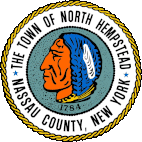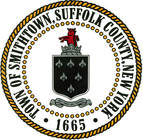Frequently Asked Questions
1. What is Long Island Green Homes?
Long Island Green Homes is a non-profit collaborative partnership of Long Island Towns, community organizations and Molloy College that works to help families lower their energy bills. We are contracted through the New York State Energy Research and Development Authority’s (NYSERDA). Long Island Green Homes works to encourage home energy efficiency as the starting point for establishing a complete green home. The benefits of home energy efficiency are numerous, and represent a wise investment. Lower utility bills and increased energy savings; improved home comfort; increased home resale value and marketability; a safety check to uncover hidden problems, and protection of the environment to name a few.
Via one-on-one support from one of our experienced Energy Navigators, Long Island homeowners are connected with rebates, incentives and financing. Certified contractors work with Long Island Green Homes to help homeowners receive money-saving and energy efficient improvements to their homes. We can also assist you to determine the potential for your home to generate its own electricity using rooftop solar technologies. To learn more about the Long Island Green Homes solar offerings click here.
In addition to working with homeowners to make their homes energy efficient and more comfortable, Long Island Green Homes is focused on generating job growth and business opportunities right here on Long Island.
2. What is New York State Energy Research and Development Authority (NYSERDA)?
The New York State Energy Research and Development Authority (NYSERDA) is a New York State authority that promotes energy efficiency and the use of renewable energy sources. These efforts are key to developing a less polluting and more reliable and affordable energy system for all New Yorkers. Collectively, NYSERDA’s efforts aim to reduce greenhouse gas emissions, accelerate economic growth, and reduce customer energy bills.
NYSERDA works with stakeholders throughout New York including residents, business owners, developers, community leaders, local government officials, university researchers, utility representatives, investors, and entrepreneurs.
To learn more about NYSERDA's programs and funding opportunities, visit http://www.nyserda.ny.gov.
3. What is energy efficiency?
Each of us uses energy throughout our daily lives for transportation, space comfort, lighting and electrical devices. Often much of this power is wasted, costing us more money. Energy efficiency is a way of managing and restraining this energy use giving us the same services for less energy input.
4. What affects my home’s energy efficiency?
There are a lot of ways that your home uses energy, the majority of which goes for space heating and hot water. Most houses can see major improvements by air sealing and proper insulation. Energy professionals often refer to the exterior of a home as the "envelope" or the "shell." Sealing the envelope or shell against air infiltration (air leaking into the house from outside) and air exfiltration (air leaking from inside the house to the outside) helps reduce your energy expenditure for space heating and cooling. Plus getting rid of drafts will make your house much more comfortable.
Another important area of investigation in the energy audit is the operating “health” of the heating and cooling equipment in your house. Maintaining it properly, replacing it with new more efficient equipment and potentially switching to less expensive heating fuels when available will all help you to lower your bills.
5. What are the benefits of making my home energy efficient?
Energy efficiency improvements will help you save money and improve your home’s comfort and resale value. Expect to save around 20-30%, or $1000 a year* on utility bills. Beyond the cost savings, efficiency improvements will make your home more comfortable and healthier. Reducing drafts can help you stay warmer in winter and cooler in summer. Participating homeowners can be assured that the money you spend on heating and cooling your home is money well spent. But we'll actually be looking at more. Like killer carbon monoxide (CO) potentially being released inadvertently by your heating system, and toxins such as mold or asbestos.
6. Do I qualify? Who is eligible?
Every homeowner on Long Island can participate in Long Island Green Homes. Depending on your family income and size additional assistance may be available. Speak to your Energy Navigator for information on programs for which you may qualify. Call us at 800.567.2850.
7. Is there financing available?
Yes. New York State provides low interest financing for approved energy efficiency measures. Ask your Energy Navigator for more information and details.
8. How do I find out what my home needs?
Our experienced Energy Navigators will arrange for your FREE comprehensive Home Energy Audit conducted by a certified Long Island energy efficiency professional. The energy audit will let you know where your home is wasting the most amounts of energy, and money. Every Long Island Green Homes audit also includes a carbon monoxide health and safety check. After the audit is complete, your contractor will provide you with a detailed report that outlines the recommended improvements and their costs. The audit takes about two hours and is a complete and comprehensive check of your home’s energy use.
9. Who will do the work on my home?
If you choose, the same certified Long Island Home Performance contractor that performs the energy audit can perform the work. All of our pre-screened contractors are available to you, however.
10. What is the First Step in the Process?
Provide us with your contact info here or call us at 800.567.2850. A Long Island Green Homes Energy Navigator will ask you a few questions about your home, quickly schedule your free energy audit, and answer any questions that you have. Our navigators can also take this opportunity to explain the rebates, discounts and financing for which you are eligible.
NY State Energy Efficiency Programs and Incentives
Long Island Green Homes is a non-profit collaborative partnership of Long Island Towns, community organizations and Molloy College that works to help families lower their energy bills. We are contracted through the New York State Energy Research and Development Authority’s (NYSERDA). Long Island Green Homes works to encourage home energy efficiency as the starting point for establishing a complete green home. The benefits of home energy efficiency are numerous, and represent a wise investment. Lower utility bills and increased energy savings; improved home comfort; increased home resale value and marketability; a safety check to uncover hidden problems, and protection of the environment to name a few.
Via one-on-one support from one of our experienced Energy Navigators, Long Island homeowners are connected with rebates, incentives and financing. Certified contractors work with Long Island Green Homes to help homeowners receive money-saving and energy efficient improvements to their homes. We can also assist you to determine the potential for your home to generate its own electricity using rooftop solar technologies. To learn more about the Long Island Green Homes solar offerings click here.
In addition to working with homeowners to make their homes energy efficient and more comfortable, Long Island Green Homes is focused on generating job growth and business opportunities right here on Long Island.
2. What is New York State Energy Research and Development Authority (NYSERDA)?
The New York State Energy Research and Development Authority (NYSERDA) is a New York State authority that promotes energy efficiency and the use of renewable energy sources. These efforts are key to developing a less polluting and more reliable and affordable energy system for all New Yorkers. Collectively, NYSERDA’s efforts aim to reduce greenhouse gas emissions, accelerate economic growth, and reduce customer energy bills.
NYSERDA works with stakeholders throughout New York including residents, business owners, developers, community leaders, local government officials, university researchers, utility representatives, investors, and entrepreneurs.
To learn more about NYSERDA's programs and funding opportunities, visit http://www.nyserda.ny.gov.
3. What is energy efficiency?
Each of us uses energy throughout our daily lives for transportation, space comfort, lighting and electrical devices. Often much of this power is wasted, costing us more money. Energy efficiency is a way of managing and restraining this energy use giving us the same services for less energy input.
4. What affects my home’s energy efficiency?
There are a lot of ways that your home uses energy, the majority of which goes for space heating and hot water. Most houses can see major improvements by air sealing and proper insulation. Energy professionals often refer to the exterior of a home as the "envelope" or the "shell." Sealing the envelope or shell against air infiltration (air leaking into the house from outside) and air exfiltration (air leaking from inside the house to the outside) helps reduce your energy expenditure for space heating and cooling. Plus getting rid of drafts will make your house much more comfortable.
Another important area of investigation in the energy audit is the operating “health” of the heating and cooling equipment in your house. Maintaining it properly, replacing it with new more efficient equipment and potentially switching to less expensive heating fuels when available will all help you to lower your bills.
5. What are the benefits of making my home energy efficient?
Energy efficiency improvements will help you save money and improve your home’s comfort and resale value. Expect to save around 20-30%, or $1000 a year* on utility bills. Beyond the cost savings, efficiency improvements will make your home more comfortable and healthier. Reducing drafts can help you stay warmer in winter and cooler in summer. Participating homeowners can be assured that the money you spend on heating and cooling your home is money well spent. But we'll actually be looking at more. Like killer carbon monoxide (CO) potentially being released inadvertently by your heating system, and toxins such as mold or asbestos.
6. Do I qualify? Who is eligible?
Every homeowner on Long Island can participate in Long Island Green Homes. Depending on your family income and size additional assistance may be available. Speak to your Energy Navigator for information on programs for which you may qualify. Call us at 800.567.2850.
7. Is there financing available?
Yes. New York State provides low interest financing for approved energy efficiency measures. Ask your Energy Navigator for more information and details.
8. How do I find out what my home needs?
Our experienced Energy Navigators will arrange for your FREE comprehensive Home Energy Audit conducted by a certified Long Island energy efficiency professional. The energy audit will let you know where your home is wasting the most amounts of energy, and money. Every Long Island Green Homes audit also includes a carbon monoxide health and safety check. After the audit is complete, your contractor will provide you with a detailed report that outlines the recommended improvements and their costs. The audit takes about two hours and is a complete and comprehensive check of your home’s energy use.
9. Who will do the work on my home?
If you choose, the same certified Long Island Home Performance contractor that performs the energy audit can perform the work. All of our pre-screened contractors are available to you, however.
10. What is the First Step in the Process?
Provide us with your contact info here or call us at 800.567.2850. A Long Island Green Homes Energy Navigator will ask you a few questions about your home, quickly schedule your free energy audit, and answer any questions that you have. Our navigators can also take this opportunity to explain the rebates, discounts and financing for which you are eligible.
NY State Energy Efficiency Programs and Incentives
* In the Town of Babylon, where results from energy efficiency improvements have been measured since 2008, average savings equaled $1,084 annually or 20-30% off energy bills.
Member Towns and Organizations:












